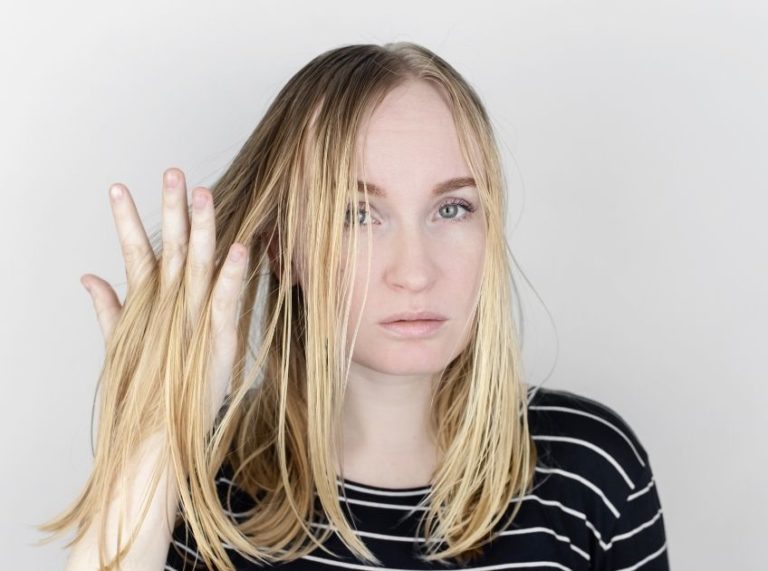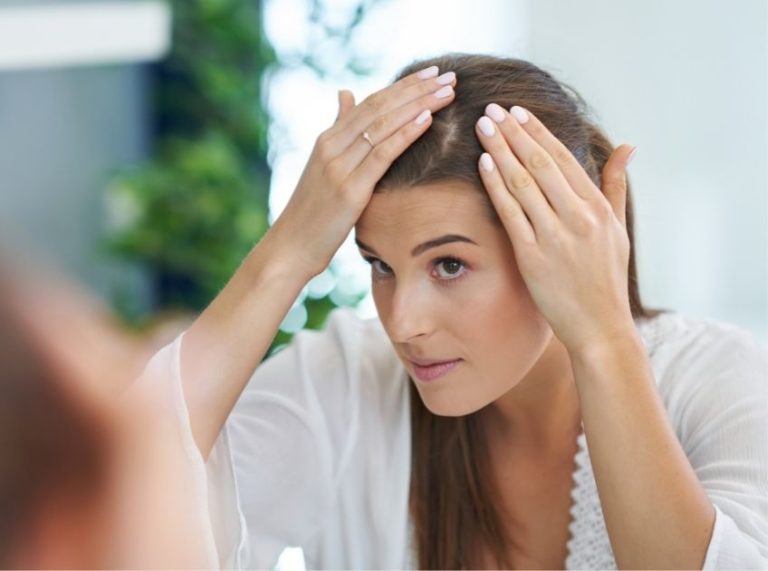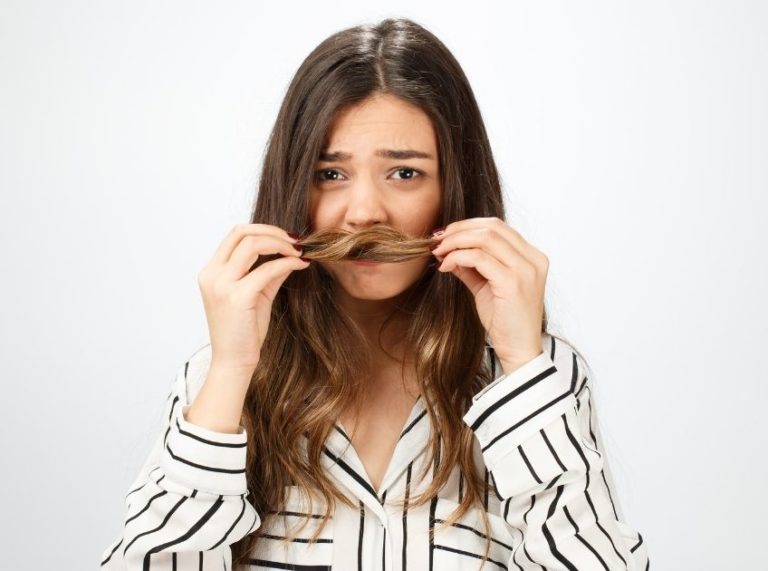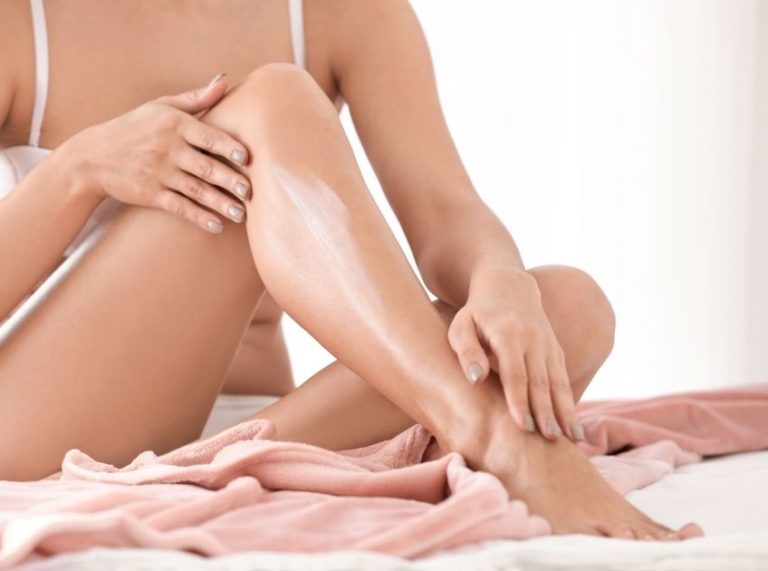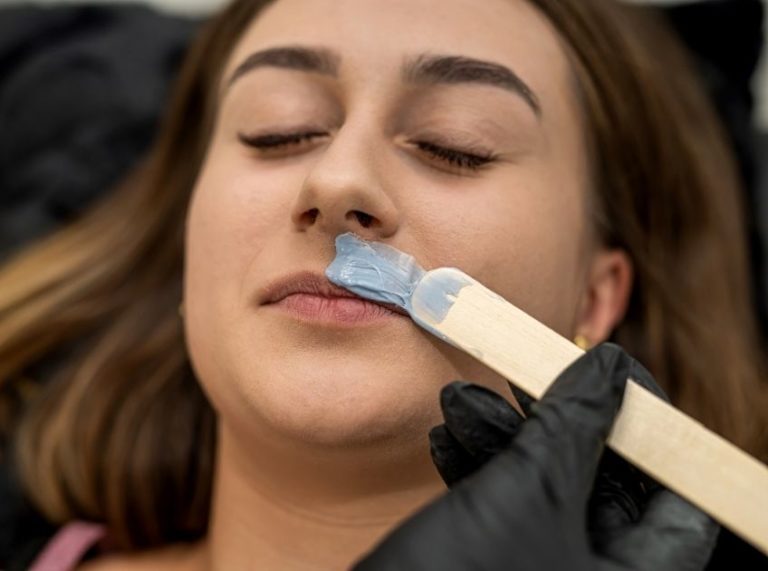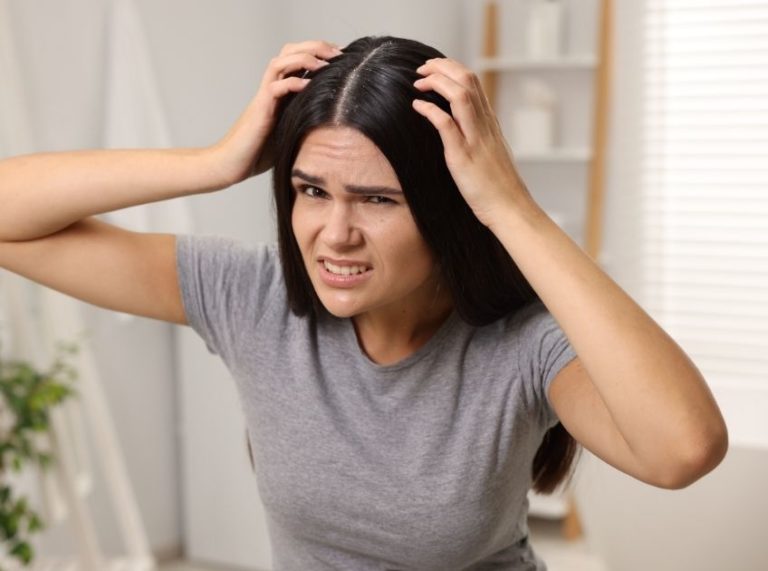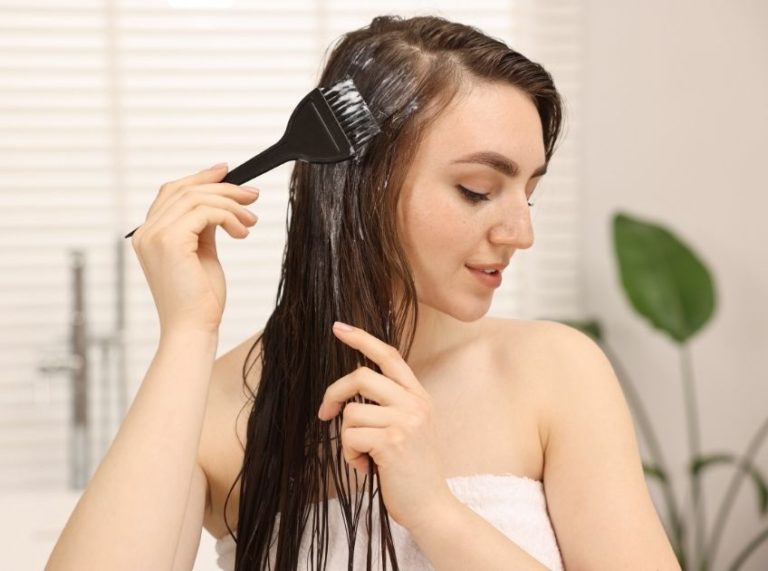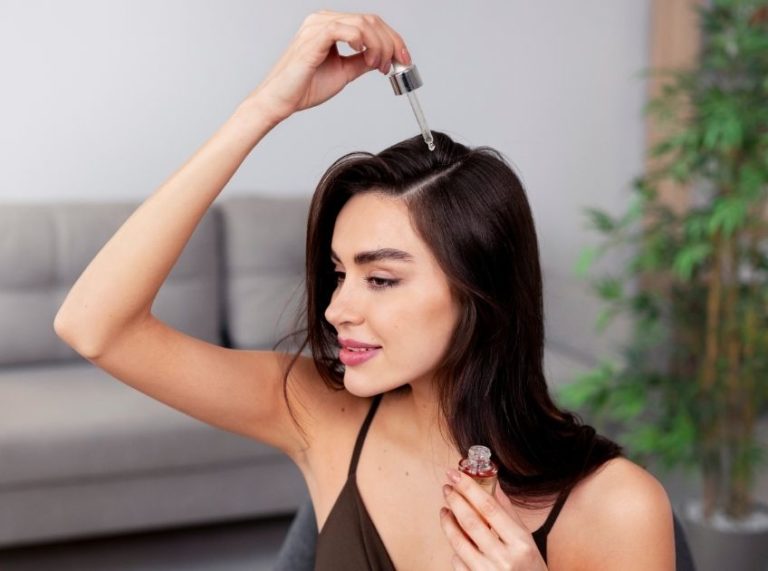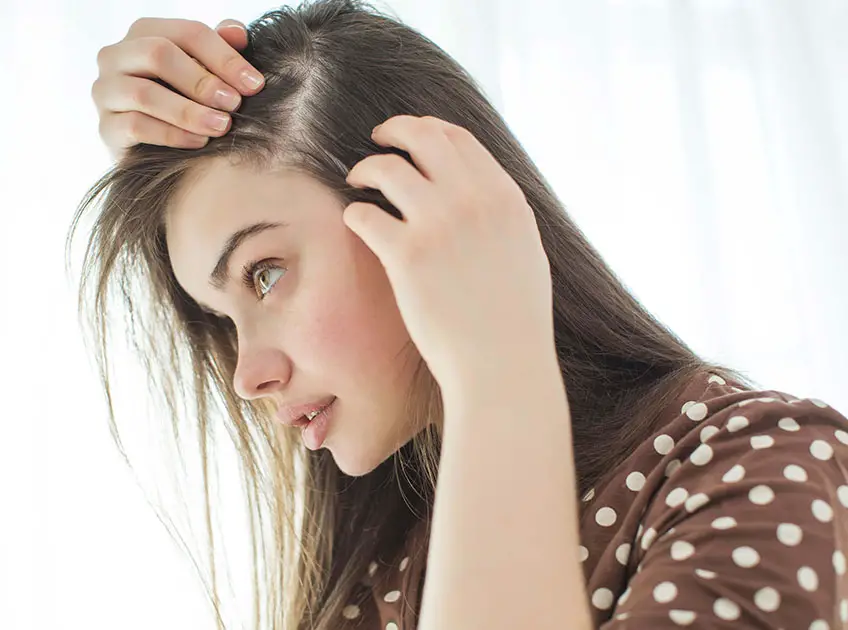
Important: This article is for informational purposes only. Please read our full disclaimer for more details.
Is the color of your scalp lighter than your skin? Is this something to worry about? Many people have this dilemma, and therefore we have come up with answers to all your queries. Keep reading to find out!
The scalp is like the soil where your hair grows. As we know, fertile soil always reaps better yield, and so does the scalp. The scalp is the barometer of your health and tells how healthy your hair is. So, what color is your scalp?
My Scalp Lighter Than My Skin

What Color is Your Scalp?
In general, the scalp could be of four different colors- white, yellow, pink, brown, and red. Let’s dig a little deeper and find out which color tells what about your health.
1. White Scalp: White color is the ideal scalp color, telling that it is healthy. If there are no flakes, the skin looks translucent, neither too oily nor too dry and soft to touch, the scalp is perfectly healthy, and there is nothing to worry about.
However, these conditions may change with the change in lifestyle and diet and also with age. So, always keep that in mind.
2. Yellow Scalp: The occurrence of the yellow scalp is attributed to overactive sebum secretion that clogs the hair follicles and causes oil to stick on the scalp. If you have an excessively oily scalp, it must be due to overactive sebum, a sign of scalp oxidation.
In such cases, it is essential to start using the right hair care products to prevent such conditions.
3. Pink Scalp: Pink scalp is an indication of weak and less micro-circulation throughout the scalp. It could be because you lack a hydrolipidic protective barrier. It is a sign of internal inflammation and shows that you are allergy-prone.
4. Red Scalp: It is next to pink scalp and indicates that your immune system is not responding well. A red scalp should be considered a red flag to health. Bad micro-circulation, sunburn, or external cause of inflammation may lead to a red scalp that needs immediate action.
5. Brown Scalp: Extremely bad circulation leads to the brown scalp. If such is your case, you immediately need medical attention. Brown scalp indicates that toxins have accumulated in the blood, and impurities have developed inside the body that needs to be drained out straight away.
Now that you know what scalp color determines your health condition, you need to check whether your scalp is lighter in terms of white or pink.
[ Read: How to Detox Your Scalp at Home ]
What Else Can Make the Scalp Look Lighter?
Apart from the medical conditions, scalp color may also get dark due to excessive exposure to sunlight. Generally, the scalp is lighter in color than the skin due to sebaceous glands that secrete sebum. It makes the scalp and hair oily and prevents dryness.
Sebum is important as it creates a protective layer around hair follicles and prevents their damage. But, at the same time, too much sebum could cause excessive oiliness and clog the pores; therefore should be washed off regularly. Likewise, dandruff and dead skin tissues also contribute to the lighter scalp color.
How to Know My Scalp is in Danger?
A Few Warning Signs Include
1. Oily Scalp:
- If your scalp is too oily and greasy, it welcomes fungi and bacteria to colonize and grow.
- It results in dandruff and other scalp problems. People living in hot and humid conditions often face this problem.
- Treat the excessive grease build-up by using the right hair care products, exfoliating the scalp, and not applying hair conditioners and hair definers to the scalp.
- If the condition is not improving, ask a dermatologist.
2. Dry, Aging, and Itching Scalp
- Dye and itching scalp occurs when sebum secretion is not sufficient to create a protective hydrolipid film.
- Blood vessels, nerves, and sebaceous glands provide fluid exchange and regulate the scalp’s temperature.
- However, if any of the function gets hampered, dye and itching skin occurs.
3. Dandruff and Flaking

- It is one of the most common scalp problems that happen when the scalp’s cell renewal process shortens.
- The scalp cells stick together, forming visible flakes that could be dry or greasy.
- You should talk to the dermatologist if the situation becomes unmanageable.
4. Reddish and Painful Scalp
- It happens due to sun damage, allergy, and irritation.
- Other causes are excessive use of harsh and chemical-based hair care products, excessive sun exposure, hair bleaching, hair color, and use of products that cause allergy.
- In such cases, find the right salon and take some hair care treatment that provides a protective layer to the scalp.
Scalp tells a lot about your health. People often take care of their hair and forget about the scalp, which eventually degrades the hair quality too. So, for healthy hair, make sure your scalp is healthy too.
You Might Also Like:
- What is a Scalp Care Routine? Essential Steps for Healthy Hair
- How to Balance Scalp pH Naturally for Healthy Hair and Scalp
- How Often You Should Oil Your Scalp?
- Why Does My Scalp Hurt When My Hair Is Dirty ?
- Can Conditioner Cause an Itchy Scalp? How to Fix It
- How to Get Rid of Dry Scalp Naturally | Remedies & Prevention Tips
- Kerotin Scalp Massager Review
- The 5 Simple DIY Scalp Scrub Recipes for Healthy Hair & Scalp
- Is Olive Oil Good for Your Scalp?
- How to Use Tea Tree Oil for Scalp?
- 7 Best Shampoos For Oily Scalp And Dry Ends
- Nioxin Step 2 Shampoo: Boosting Hair Volume for Noticeably Thicker Locks
- What Does Toner Do To Hair
- How to Cut Your Own Hair at Home Like a Pro?
- Can You Use Baby Powder as a Dry Shampoo?
- 10 Best and Effective Homemade Hair Masks for Hair Fall Control
- How to Use Rosemary oil for Hair Growth?
- Home Remedies For Dry Itchy Scalp
- How to Get Rid of Scabs on Scalp
- 7 Best Moisturizers For Scalp

